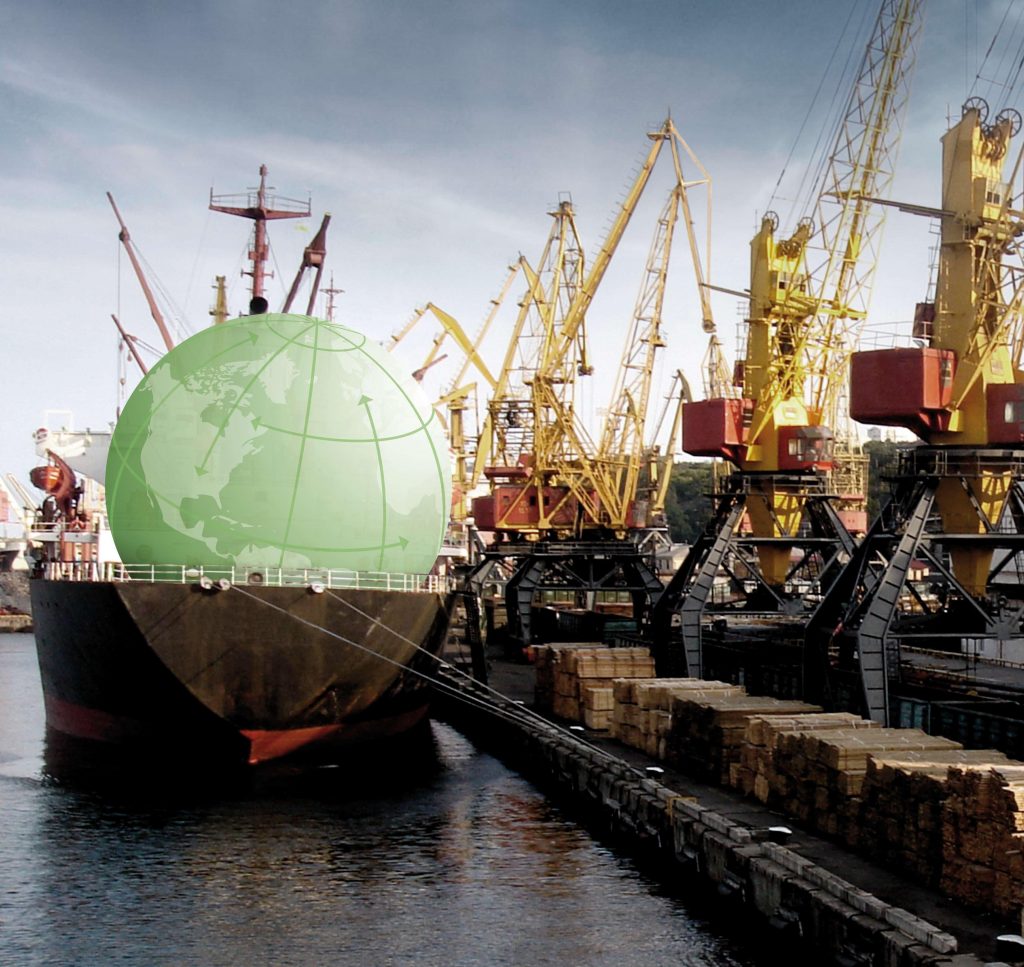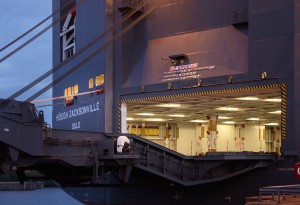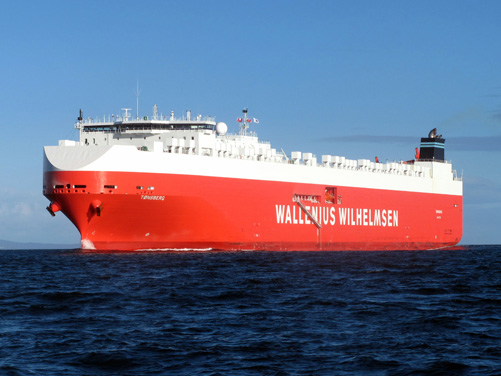 The lack of a standard worldwide trading system has resulted in many and varied trade agreements between countries that make for complicated import and export scenarios. However, progress is being made by way of broader negotiations and smarter customs procedures
The lack of a standard worldwide trading system has resulted in many and varied trade agreements between countries that make for complicated import and export scenarios. However, progress is being made by way of broader negotiations and smarter customs procedures
While the shipping of finished vehicles follows market demand, it is also widely influenced by customs, duty and trade regulations. Lower import tariffs naturally tend to encourage the flow of vehicles from other regions, while higher duties discourage them. Setting customs rates and procedures is a matter of national policy, and they vary considerably across the globe.
To that effect, free trade agreements between countries or trading blocs have a big impact on inward investment in vehicle production and in vehicle trade. They open new markets and reduce obstacles to existing ones for carmakers, and often negate or minimise many of the trade barriers that affect the flow of vehicles, such as import and export restrictions, including local content regulations, tariff levels, competitive devaluations, and the need for free trade zones.
One only has to look at the impact of different countries’ policies on their automotive sectors to grasp their importance. Mexico, for example, as well as being a member of the North American Free Trade Agreement (NAFTA), has a longstanding free trade agreement with Latin America, called the Latin American Integration Association (ALADI), as well as duty-free access to the European Union and dozens of other markets. Brazil, on the other hand, has increased customs levels to as high as 35% and generally tried to discourage vehicle imports while encouraging domestic production with tax cuts and incentives. The result, in part, has been increased investment in production for both countries – but in Mexico the focus is for exporting vehicles, while in Brazil OEMs are building smaller factories that mainly serve its (large) domestic market.
Oyvind Ervik, head of short sea and logistics at Höegh Autoliners, points out that such agreements have been a big factor in Mexico’s growth, including new factories planned for Kia, BMW and Mercedes-Benz, following Japanese OEMs who have been opening factories there. “Within the past year or so, the largest shift is probably the decline of Japan and rise of Mexico as a source for North America. NAFTA is only one driver to this trend, but the change in flow is quite significant,” says Ervik.![]()
Such trade agreements can be positive for vehicle shipping and trade, and there is certainly no shortage of agreements in existence or under negotiation. Rainer Roll, director of sales and marketing at MIC Customs Solutions, says more and more countries are entering into bilateral free trade agreements to make both markets more attractive, including negotiations between the US and the EU, between the EU and Japan, as well as potential agreements across Asia.
Barriers beyond duties and borders
On the other hand, controls and inspections are rising along with these agreements, adds Roll. What’s more, the rise in free trade deals in some ways highlights the increasing lack of a global trading system. At one point in the last decade, the World Trade Organisation (WTO) had aspirations to reduce tariffs across all its member states. Those talks have largely failed, the result of which has been a big jump in individual agreements, leading to more non-standard and complex processes in each country across a shipping route, for example.
“The WTO is still largely ineffective in fulfilling its objective, and the delay in global agreements means that quite a few bilateral agreements are being put into place instead, thereby increasing the complexity for companies that are involved in global trade,” says Joost Somers, head of customer care at shipping company Wallenius Wilhelmsen Logistics (WWL).
Within that complexity is a larger question about global trade policy, which is whether the headline rate of tax and customs duty should be the principle focus of trade negotiations between countries and economic alliances. Studies by the World Economic Forum, for example, have identified a number of non-tariff barriers that are in many cases equal or greater obstacles to trade, including for finished vehicles. These include overly bureaucratic and slow customs clearance as well as regulatory differences that prevent cars from one country entering another. The good news for carmakers and shipping lines is that there has been progress in this area, including the recent Bali agreements in which WTO members agreed to tackle non-tariff barriers.
Elsewhere, however, protectionism has strengthened. Despite its entry to the WTO in 2012, Russia has in many ways tightened its borders, and Nigeria has joined Brazil in restricting imports in efforts to encourage local production.

Ervik also points to measures that exporting countries might take to intensify their exports, such as lowering export taxes, offering cheap loans and other, more disguised measures, including currency manipulation.
A global round of negotiations
Nevertheless, WWL’s Somers thinks the world trade environment has improved somewhat recently, as healthier economies reduce the protectionist tendencies that come with weak markets. Positive developments include the proposed Transatlantic Trade and Investment Partnership (TTIP) between the EU and the US (see more in ACEA interview), and the progress toward an ASEAN free trade agreement in 2016, both of which will open up opportunities for vehicle transport.
Ervik says South Korea’s free trade agreements with the EU, which came into effect in 2011, and with the US, in 2012, have probably been the most important for Höegh Autoliners, since all three areas are main markets for the shipping line. Additionally, the negotiations in the Trans Pacific Partnership (TPP) would be very significant; these include possible agreements between Australia, Brunei Darussalam, Canada, Chile, Japan, Malaysia, Mexico, New Zealand, Peru, Singapore, the US and Vietnam. He adds that the recent enhancement of the free trade agreement between China and the ASEAN region has further encouraged Höegh Autoliners to enter the intra-Asia trade with the joint venture company Sinor Lines. Intra-regional trade development has also driven its joint venture with MOL, called Euro Marine Logistics, which provides short-sea services in Europe, to enter the Asian short-sea market.
MIC’s Rainer Roll points to the ASEAN–China Free Trade Area as the largest in terms of population and third largest in terms of nominal GDP. The EU, which has enacted an agreement with Canada, is also currently negotiating free trade agreements with a number of individual and groups of countries; along with the US, it is in talks with Japan, Singapore, India, and Brazil.
Holding back trade
Even where trade deals have been enacted, many barriers to imports and exports can be imposed. Indeed, perhaps as much as the cost of duties themselves, the process of clearing customs can often create extra costs and headaches – sometimes even within trade blocs, such as between the US and Mexico.
Most countries are members of the World Customs Organisation (WCO) and implement its conventions and recommendations. “However, they do it in very different ways. It can be costly and complicated or it can occur in a way that improves the efficiency of processes, with a more limited cost impact,” explains WWL’s Somers.
 "We assessed [non-tariff] barriers along two axes – the value at stake and the ease of implementation [and found that] lengthy border-crossing processes are the most pressing issue to address "
"We assessed [non-tariff] barriers along two axes – the value at stake and the ease of implementation [and found that] lengthy border-crossing processes are the most pressing issue to address "- Jieun Chung, WEF
MIC’s Roll agrees that the main customs barriers include customs clearance time, which can vary from several minutes in the EU to multiple days in certain countries, such as Russia. He also points to other non-tariff barriers such as licences and quotas; export control regulations; and other taxes.
Gerry Mattios, a Beijing-based principal at consulting firm Bain & Company, says that even in free trade zones, tax policies can prevent the movement of goods and services along the supply chain. There are additional costs created by VAT structures, for example, which require storage of vehicles in warehousing facilities prior to distribution to dealerships; these add around $50 to a vehicle’s price, or a total of some $600m across the EU, he says.
Mattios adds that non-tariff barriers may not always be readily apparent. Companies report increasing interference and engagement from a multitude of government agencies, for example, making it difficult to narrow in on the truly relevant and required trade players.
In some cases, regulations may be viewed as a non-tariff barrier. An example, says Höegh’s Ervik, are Sulphur Emission Control Area (SECA) regulations, the latest of which came into effect in January for parts of Europe and North America. “The SECA regulations will have a direct impact on ocean carriers’ costs and will reduce their competitiveness compared to that of land-based transportation,” according to Ervik. They may also influence sourcing and trading decisions, he adds.
Improving and removing non-tariff barriers has been the focus of studies conducted by the World Economic Forum (WEF). The group’s ‘Enabling Trade 2014 Report’ identifies six key barriers facing the global automotive industry, including excessive border crossing times, re-export restrictions, and free trade obstacles involving processes and taxes. Others are lengthy dispute settlements that encourage short-term violations; a lack of visibility and transparency in trade and investment; and unnecessary regulatory differences between countries, says Jieun Chung, senior manager, supply chain and transport industries at the WEF.
“We assessed these barriers along two axes – the value at stake and the ease of implementation [and found that] lengthy border-crossing processes are the most pressing issue to address,” she says.
Chung points to the Bali Package as an instrument that aims to reduce global trade barriers; it was also the first WTO-reached agreement approved by all of its members. It reconfirmed that improving trade facilitation is the first step governments must take to improve efficiency of global supply chains. However, what it will mean to finished vehicle shippers is not entirely clear.
Mattios agrees that the Bali Package has perhaps been the best example and most recent development regarding trade barriers. There is widespread belief that it has the potential to reduce cross-border supply chain challenges. “We found that reducing a restricted set of supply

Getting smarter at the border
One of the major focus areas for trade facilitation is customs efficiency improvement. Chung states that the establishment of single window systems has been responsible for remarkable progress in terms of increasing customs efficiency. “In particular, it has helped emerging countries leapfrog trade barriers significantly,” she points out.
The single window system is a centralised trade gateway that is accessible electronically. It enables all stakeholders involved in customs processes to complete necessary documentation via one interface without the need for multiple visits to different government agencies. Chung says that further development of single window systems in more emerging markets will continue to accelerate customs processes.
“For example, Kenya, which has cumbersome customs procedures, launched its national single window system, called the Kenya TradeNet System, in 2014. We expect this to reduce cargo dwell time significantly,” says Chung.
Another example is that the Brazilian government announced a five-year plan to develop a single window system, called Portal Unico, early in 2014. Chung points out that, as one of the largest markets for finished vehicles, Brazil is vital for global automotive companies, yet has been notorious for its complex and bureaucratic administrative procedures regarding international trade. She says the Portal Unico will help the country to open its market for better inflow and outflow of finished vehicles.
There has also been progress in the automation of import and export processes in the US, which includes commodity codes on the most detailed level. “US customs has taken a collaborative approach in working with the industry in order to ensure that the process is workable,” says Somers. “WWL is currently taking part in a pilot project in this regard.”
In general, although the trend towards automation and increased disclosure involves costly information technology development and integration, Somers says it will benefit trade flows through faster customs clearance, increased predictability, and reduced risk in the supply chain.
Mattios says lengthy border crossing times and costs associated with handling and storing goods are gradually diminishing thanks to an increase in ‘smart borders’, with a strong emphasis on digitalisation. “Electronic trade and customs management systems, such as Mexico’s single window system, will enable transport operators to clear customs twice as fast as they had previously,” he says.
 "Due to increased e-customs initiatives around the world and particularly in Europe... the risk-assessment and customs clearance processes are getting more and more automated and efficient"
"Due to increased e-customs initiatives around the world and particularly in Europe... the risk-assessment and customs clearance processes are getting more and more automated and efficient"- Rainer Roll, MIC Customs Solutions
Roll reports that IT systems are helping to bring down costs substantially in customs clearance. “Due to increased e-customs initiatives around the world and particularly in Europe, along with pilot projects for self-filing with HS2000 in China, self-filing initiatives in Russia, and elsewhere, the risk-assessment and customs clearance processes are getting more and more automated and efficient,” he says.
“Every country has different customs and trade regulations. Our solutions help clients take advantage of the similarities within global customs law and standardise global business processes on a single technology platform designed for global cross-border trade,” he explains.
A world more open or closed to trade?
Despite trade barriers, Ervik says that, in general, developing markets are becoming more open to vehicle trade. After having been particularly strict because of their trade imbalances, countries such as Myanmar, Vietnam and the Philippines have become more open as their economies have grown. On the other hand, markets such as Nigeria, Russia, Brazil and Venezuela have become more restrictive.
Trade restrictions have a profound effect on trading patterns for finished vehicles, influencing various aspects of the logistics network beginning with the destination and encompassing the supply chain from mode and carrier choice to logistics service providers and custom clearance operators. Despite trade barriers that abound in many forms, positive trends include the opening of some markets and the expedition of customs clearance through information technology. Free trade agreements have generally been beneficial to improving logistics and import processes for vehicles, not least because they may eliminate or reduce customs protocols. However, such agreements on their own are not always enough to encourage trade, and there are plenty of other barriers that remain.


























![Global[1]](https://d3n5uof8vony13.cloudfront.net/Pictures/web/a/d/s/global1_726550.svgz)









